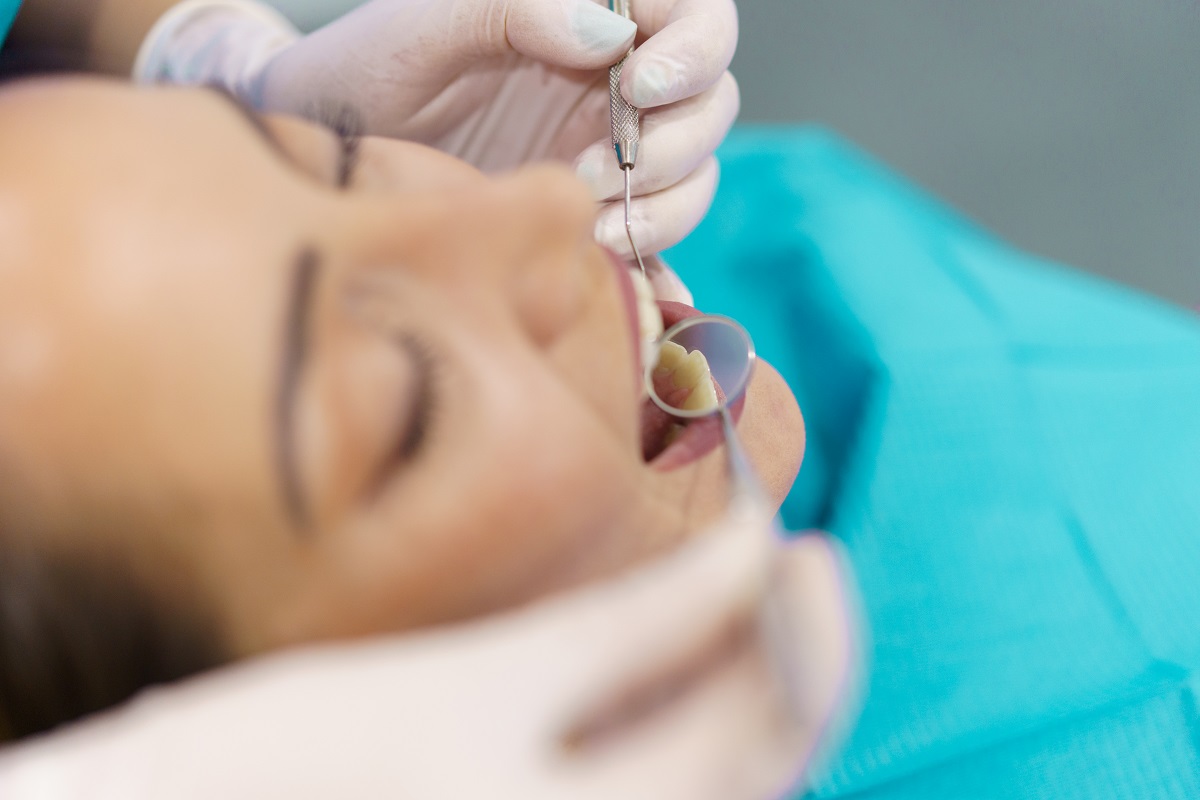What Happens During an Airflow Treatment?

What Happens During an Airflow Treatment?
What happens during an airflow treatment?
- Initial consultation and preparation
- Airflow treatment
- Other dental procedures
- Post-treatment care
As a modern type of teeth cleaning procedure, an Airflow treatment can quickly cleanse the teeth of the plaque that can build up over time. It is the sticky substance where bacteria live. If neglected, it can trigger problems such as tooth decay and gum disease. If you want to know what happens during an airflow treatment, this article is for you.
An airflow treatment involves the use of high-pressure air, water, and a special powder to target plaque and stain in your teeth and under the gumline. Compared to traditional teeth cleaning methods, it is gentle and suitable for sensitive teeth. It’s also fast so you don’t need to spend much time in the dentist’s office! If you’re interested in booking this treatment, keep on reading.
Initial Consultation and Preparation
When you arrive at your dentist’s office, they will perform a general check-up first to see the condition of your teeth and gums. Your doctor will check if you have any damaged restorations, sealants, or other oral health problems so they can also recommend a solution. Then they will explain the process of airflow to you so you can ask any questions if you have a concern.
For instance, you might be worried if you have dental implants, crowns, veneers, or braces. But the good news is, airflow treatment is safe and effective for these dental appliances. Because it’s gentle, it can remove plaque and stains on these surfaces too.
Before starting the airflow treatment, you will be given a special mouthwash so you can rinse your mouth off any food particles. Then, the dentist will apply a colored dye on all surfaces of your teeth. This helps them see where the plaque is present.
Airflow Treatment

Compared to other teeth cleaning procedures, airflow is gentler and faster. Your dentist will use a hand tool that will spray a high pressure of air and water. It would be held close to your mouth but the tool itself won’t make contact with your teeth. You might feel a slight sensation but it won’t be painful. This is why the airflow treatment is suitable for people with sensitive teeth.
Apart from that, the powders used in the treatment can fill in your dentin tubules—which are responsible for letting you feel sensations in your teeth. When you lose the enamel that protects the dentin, you might feel more sensitive to hot and cold foods.
By using the airflow hand tool, your dentist can remove all the plaque and stains in your teeth. It is also effective in reaching spaces between teeth and below the gumline. Because the treatment is effective, the need for other cleaning tools is lessened. After the procedure, your dentist will show the results. If you have minimal stains and plaque, this process can be done in less than half an hour!
Other Dental Procedures
Other than routine cleaning, your dentist might also recommend an airflow treatment before you undergo other dental procedures.
For instance, it can help remove all the contamination before installing crowns, bridges, and veneers. Because these need to be placed over your natural teeth, a clean surface allows the appliances to bond well—which ensures longevity.
Airflow treatment is also beneficial for clients with dental implants. Your dentist can use this teeth cleaning method to cleanse the implant before cementing the prosthesis.
Your dentist might also use the treatment when you’re on braces. In one of your appointments, they can use Airflow to clean fixed bands and brackets. It’s also useful for removing bracket adhesives and preparing the teeth for bracket replacements.
Lastly, an airflow treatment is great for preparing teeth for whitening procedures. Because stains are removed, whitening solutions can work more effectively.
Post-treatment Care

After the Airflow treatment, your dentist will perform a final check to ensure that all plaque is removed. Then they will apply fluoride, which can help strengthen your enamel and prevent cavities.
Once the treatment is finished, you can ask your dentist any questions you have about the procedure. They will also recommend oral health tips so you can lengthen the effect of the Airflow treatment and enjoy cleaner and whiter teeth for a long time.
As usual, keep up with your brushing and flossing to keep your oral health in top shape. Your dentist will tell you when you need to come back for routine cleaning again.
Key Takeaway
Airflow treatment is a fast and effective process. It only takes a few minutes so it’s recommended to have it as a part of your routine cleaning. This way, you can keep your smile in tip-top condition.
If you have additional questions about what happens during Airflow treatment, you can send a message or call the branches of Casipit Medical Group! We have dentists that are trained and experienced in this procedure, so you can be informed before scheduling one.












